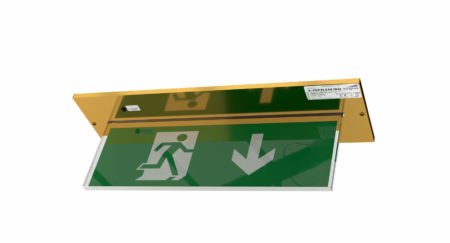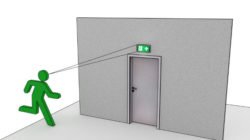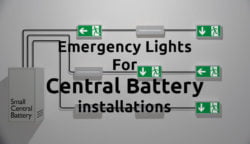Emergency Lighting is used to ensure the occupants of a building will be free from harm when there is a power loss. A loss of mains power is usually from a power cut or fire. Lighting needs to be available for the safe evacuation of the building in these circumstances. It should also be there to help any emergency services going into the building to do their job. Building regulations and local authorities ensure that your buildings meet the emergency lighting regulations.
Under the Regulatory Reform (Fire Safety) Order 2005, businesses must install emergency lighting in their premises by law. It indicates that emergency routes and exits must be indicated by signs and emergency routes and exits requiring illumination must be provided with emergency lighting of adequate intensity in the case of failure of their normal lighting. As well as emergency lighting regulations there is much, much more to the reform and needs thorough scrutiny.

BS 5266-1:2016
Currently BS 5266-1:2016 is the emergency lighting regulation that you need to abide by. This Regulation is the Code of practice for the emergency lighting of premises and is used as guidance to the correct application of emergency lighting.
BS 5266 is published in many parts or sub-topics.
- Part 1: Code of practice for the emergency lighting of premises.
- Part 2: Code of practice for electrical low mounted way guidance systems for emergency use.
- Part 4: Code of practice for design, installation, maintenance and use of optical fibre systems.
- Part 5: Specification for components parts of optical fibre systems.
- Part 6: Code of practice for non-electrical low mounted way guidance systems for emergency use – Photoluminescent systems.
- Part 8: Emergency escape lighting systems (also numbered BS EN 50172).
BS EN 50172 / BS 5266-8
BS EN 50172 (BS 5266-8) covers the following topics:
- General requirements for emergency escape lighting.
- Escape route lighting.
- Open area (anti-panic) lighting.
- High risk task area lighting.
- Standby lighting.
When you are dealing with emergency lighting regulations, what ever stage you are at, whether design or maintenance, it is always best to speak to someone that knows. We would always recommend speaking to your local business fire safety officer. That way you can be sure that you are going to get it right and avoid costly mistakes.




